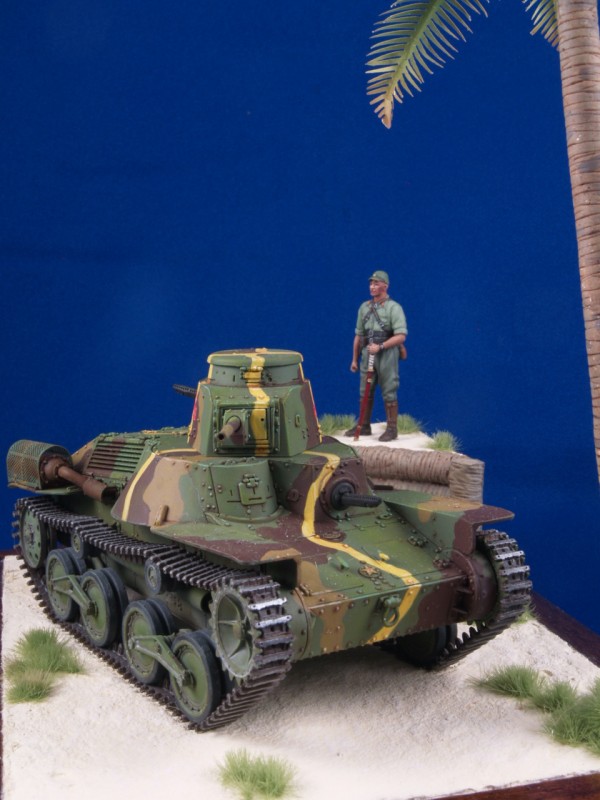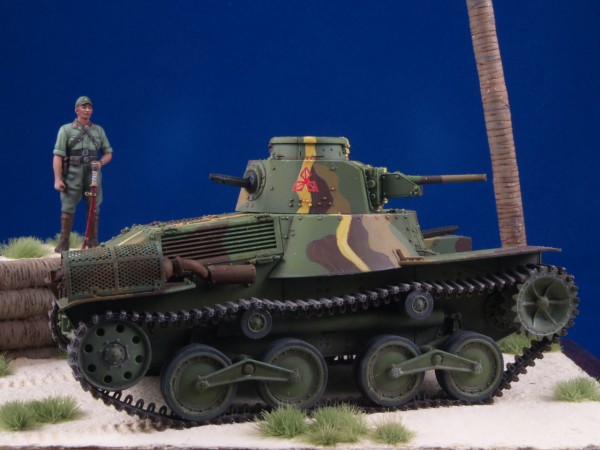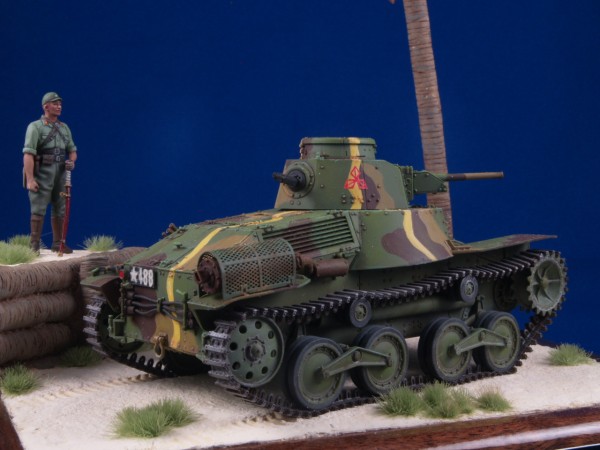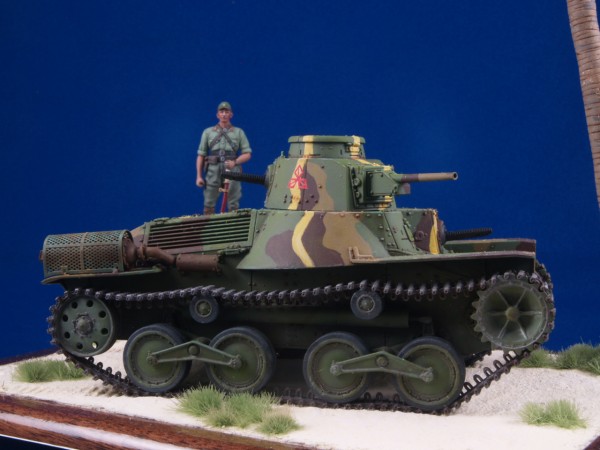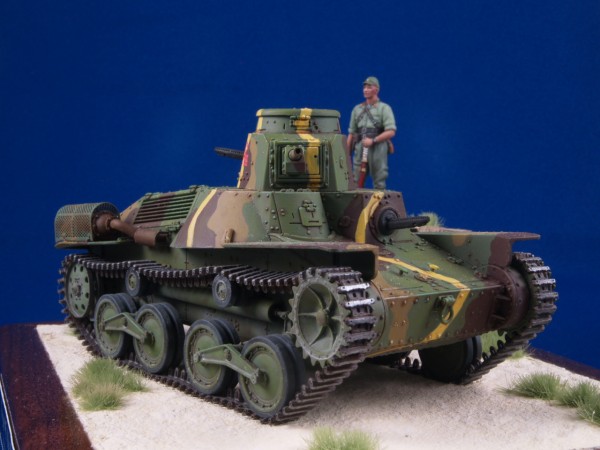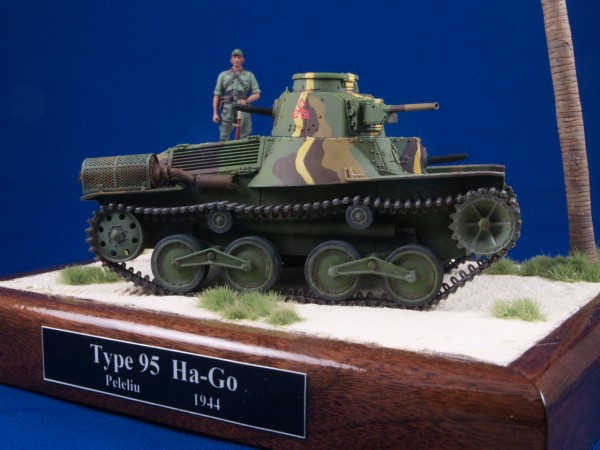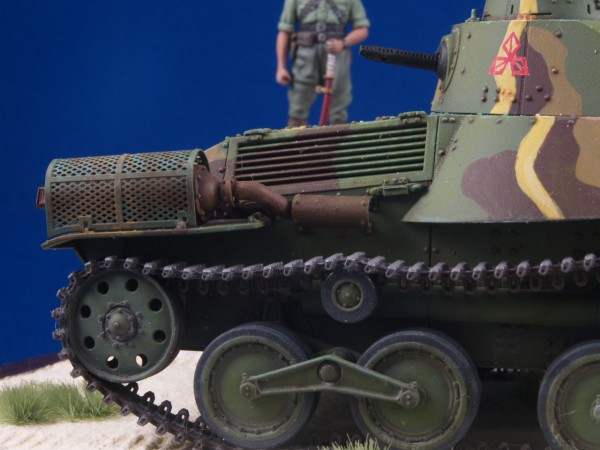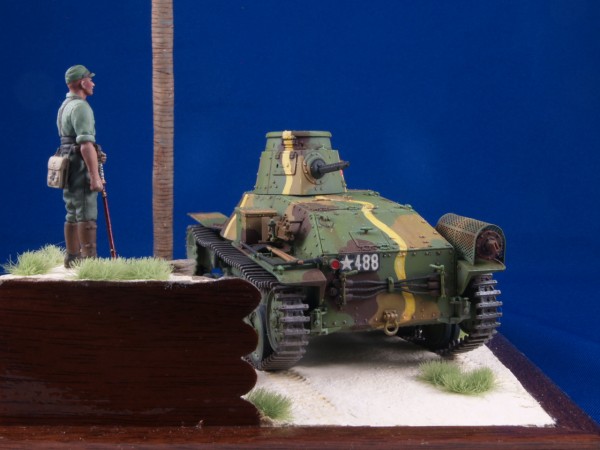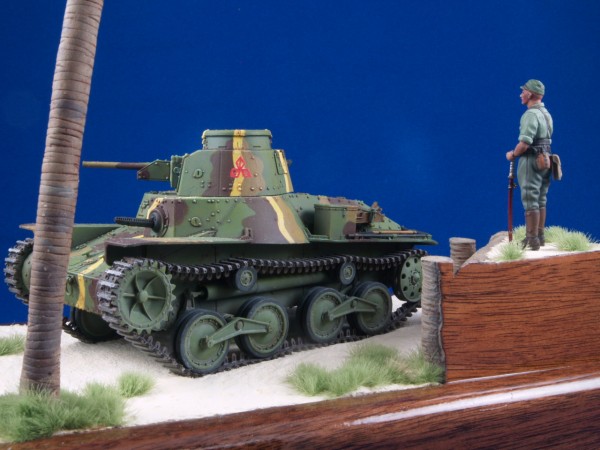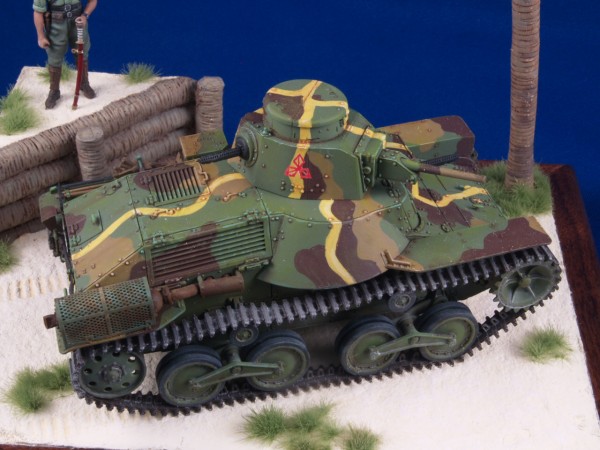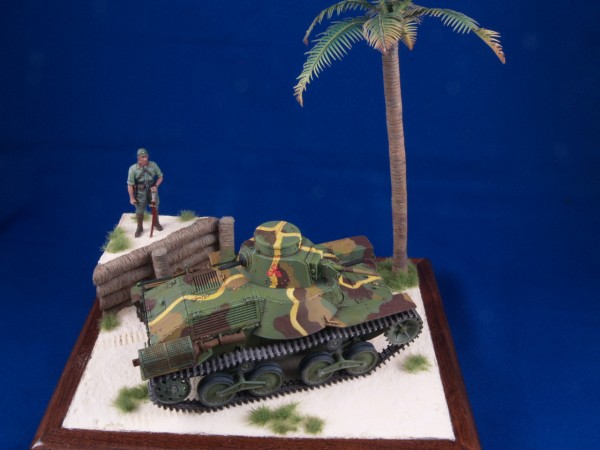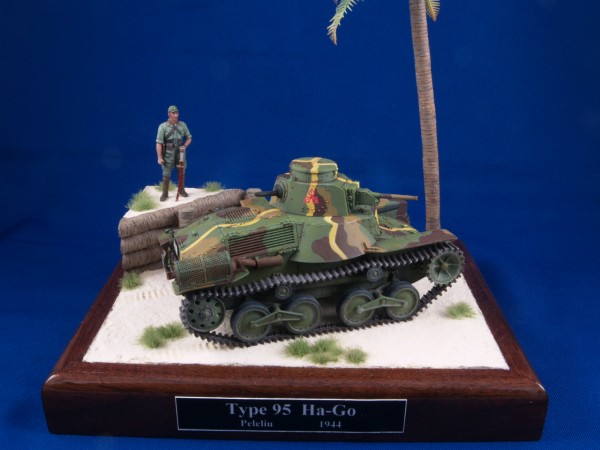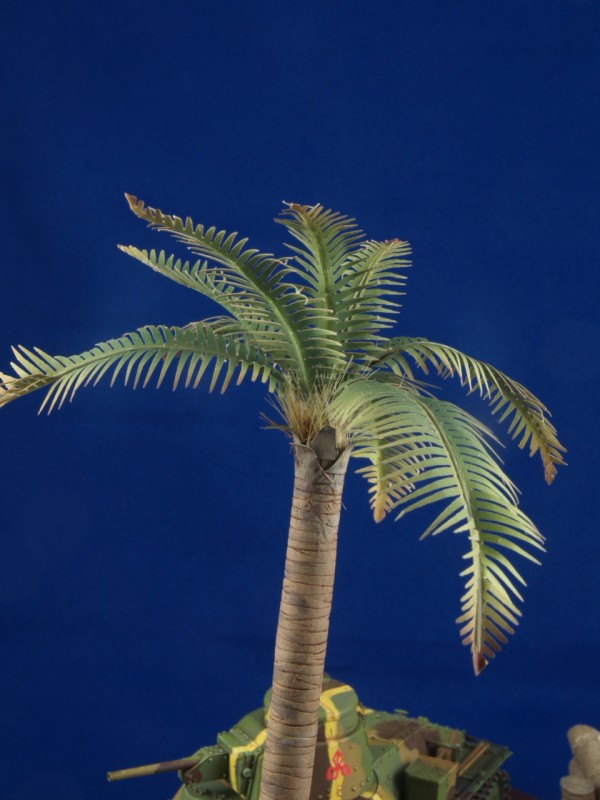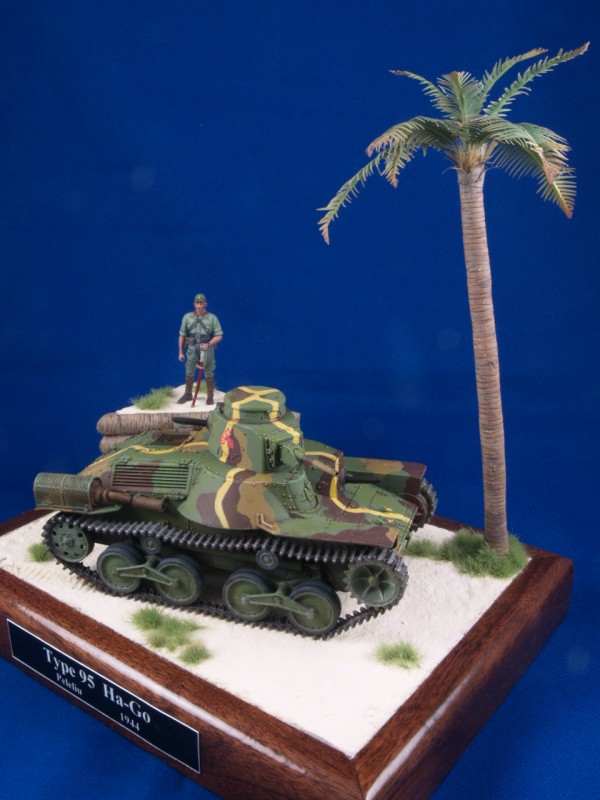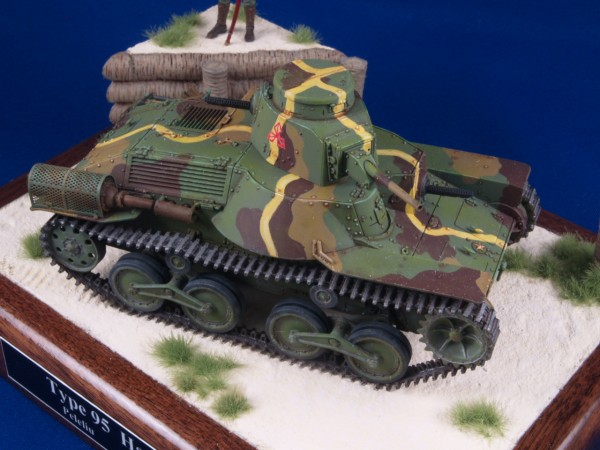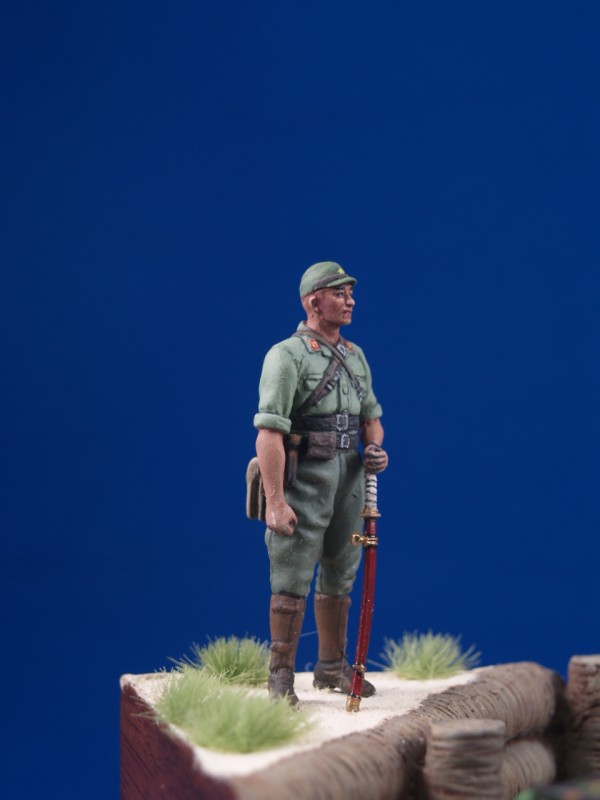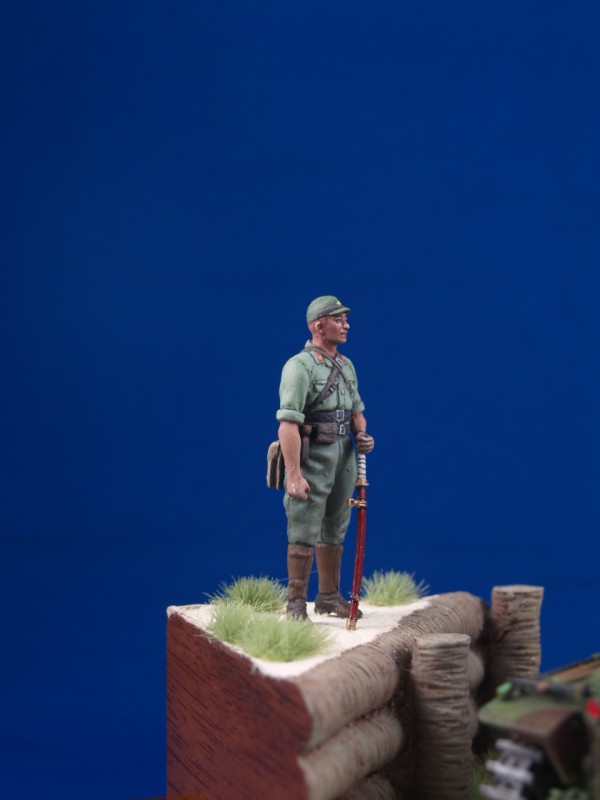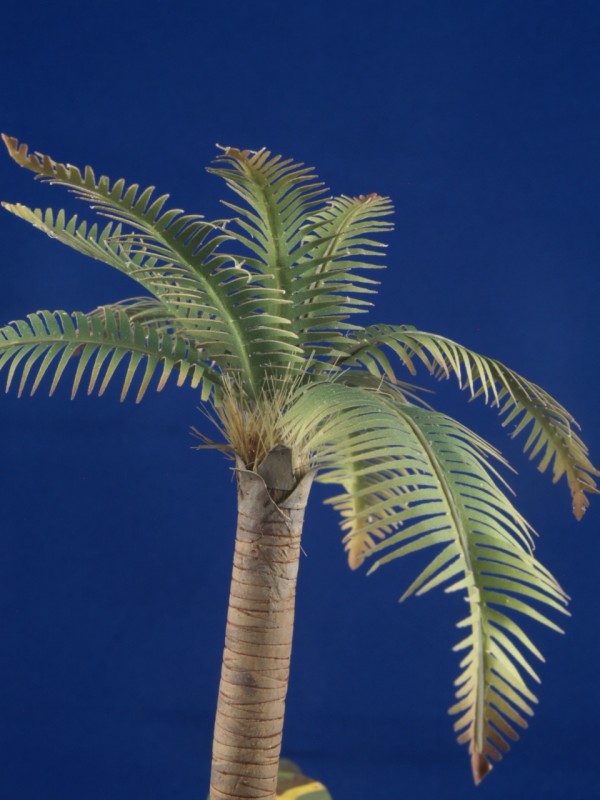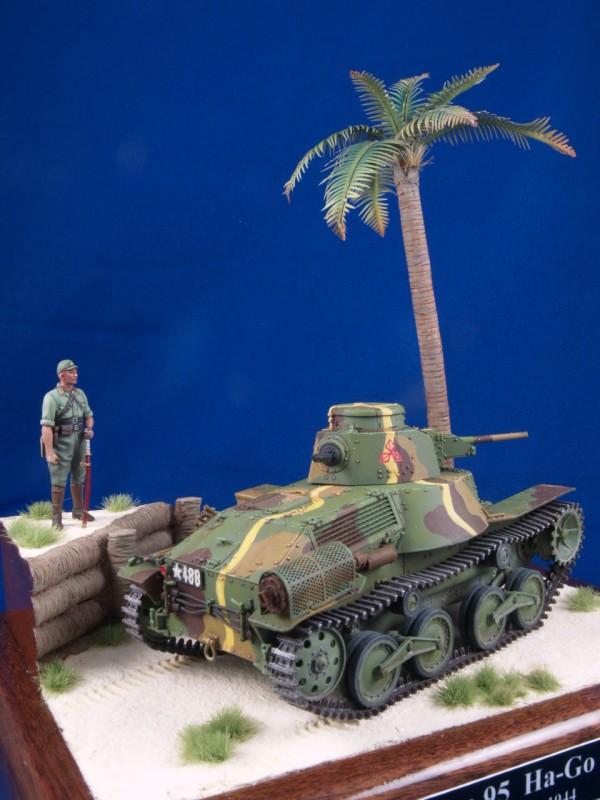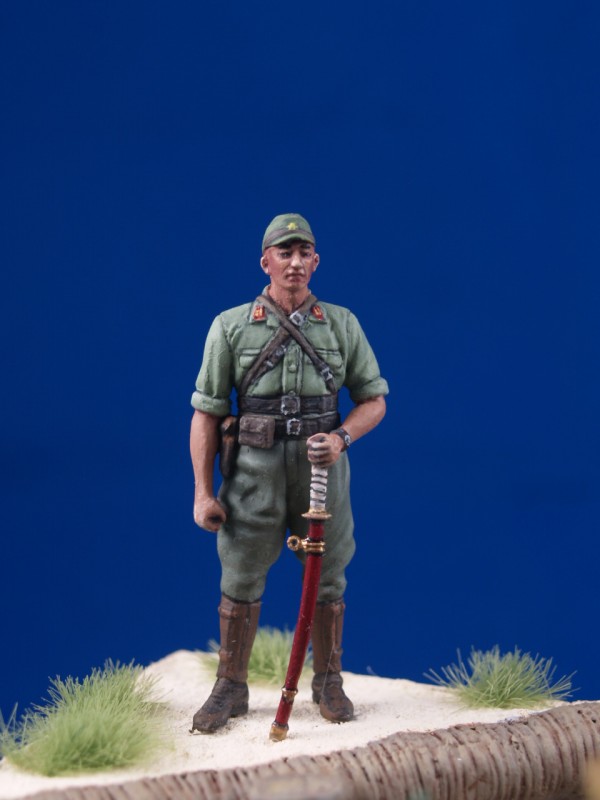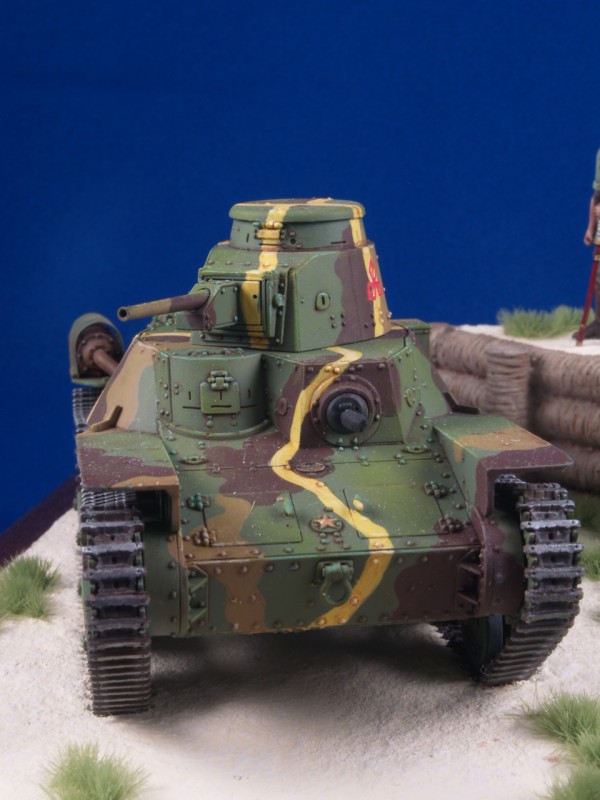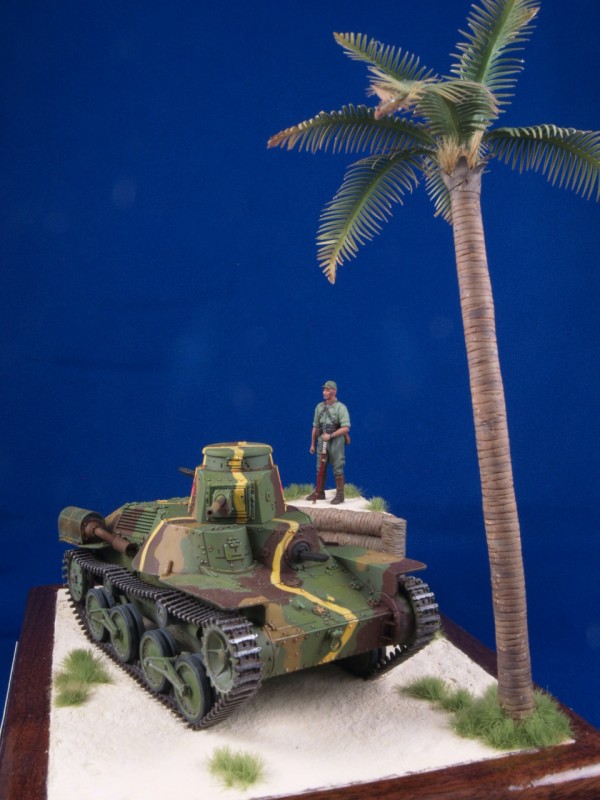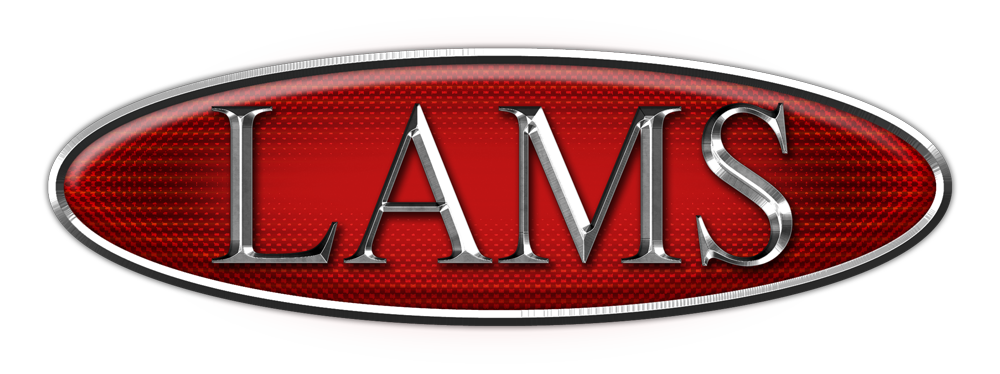This piece was inspired by the color illustration in Concord’s Tank Battles of the Pacific War between 1941 and 1945. Trying to find vehicles that vary the standard camouflage colors of the combatants of the war is never easy and this fit the bill perfectly. A quick search of the Internet found that the island had many coconut plantations before the war and nice white sand beaches. With the research completed and a display idea formulated, work could begin. The setting would be a quiet day on Pelileu Island prior to the American invasion in late 1944.
I used the Dragon kit to depict this vehicle. Built totally out of the box, the kit literally falls together. I did remove the mud scrappers under the front fender, as they came in contact with the tracks and I haven’t seen many photos with them in place. I placed the idler wheels in the center of their mountings. The tracks were very loose, and I needed to remove two track links per side. The tracks were then installed on the model. Thin cardboard was bent into “V” shapes and placed between the vehicle hull and the tracks where the tracks would sag. Done correctly, the track is tightened enough to fit properly and give even sag between each of the upper support points. Tamiya cement was applied to each of these areas, as well as the sprocket and idler wheel. After allowing to dry for several hours, the cardboard was removed and the track had a natural sag. Modified Tamiya XF 71 was used for the base color. The camouflage colors and yellow stripe are Vallejo. Minimal weathering was done with oils and Mig Pigments beach sand.
The palm tree was made from a wooden chopstick soaked in water and given a slight bend. The stick was carved into the desired shape before a coat of epoxy putty was applied. The epoxy putty was “grooved” while still wet to give appearance of the frond rings on the trunk. These grooves were matched as closely as possible to the section of Verlinden beach wall. The trunk was painted and a small amount of Woodland Scenics Field Grass Harvest Gold was placed at the top. The palm fronds are from J’s Work. These fronds are paper and were modified by gluing stretched sprue to give the indication of the main support of the frond. This also allowed them to be formed with the necessary droop. Paper sections were cut to simulate removed dead fronds. A small machine screw with the head removed was epoxied into a hole drilled in the base of the frond, leaving half of the screw exposed.
I wanted to depict convincing beach sand for this project. The sand was made from CelluClay mixed with water and white glue. CelluClay was applied to the base, smoothed and “stippled” with a large soft makeup-type brush. Footprints were added using an old figure. I then made the tank’s track marks and placed the tank in its location. After allowing the CelluClay to dry for a few days, the tank was removed. The base was painted with Tamiya white that had been mixed with a few drops of XF 59. This was done sparingly as to not ruin the effect of a sandy beach. This was later enhanced with much diluted washes of yellow ocher oils and dry brushed with white oils. A hole was drilled for the palm tree, and the remainder of the screw was epoxied into the hole. The threads on the screw ensure a good bond on the palm and the base. Grass clumps are from Silfor.
The figure is from the Modelkasten Japanese Mechanised Figure set. These are excellent plastic figures, having detail to the ears usually seen in resin figures. I painted the figure according to the book Japanese Military Uniforms 1930-1945 by Nakanishi. To add some color, I painted the scabbard a glossy wine red color with gold details. The figure was attached with a brass rod drilled and glued into one leg and a corresponding hole in the base
The final touch was the label printed on photo paper and affixed using double sided tape.
Mike Armstrong
